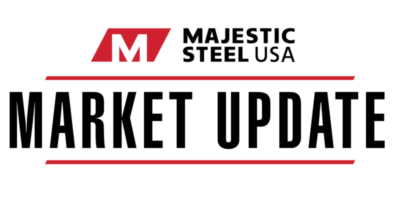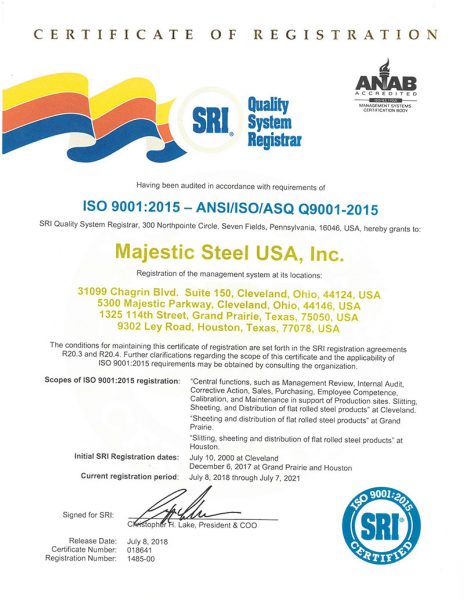Market Update | November 9, 2022
A TALE OF TWO SCRAP MARKETS IN NOVEMBER
It was a tale of two markets for scrap pricing in November. While the Southern market (Alabama, Arkansas, Carolinas, Mississippi) saw busheling pricing hold flat in November, the Northern market (Chicago) saw further price erosion. The November Chicago #1 busheling price settled at $325/gt, down $30/gt (8.5%) from October and is now down for the seventh consecutive month. The current price is at its lowest level in two years.
Input Costs
A potential easing of their COVID-0 policy in China, combined with a slightly weaker U.S. dollar helped key base metal and rate materials rebound this week after sharp declines the previous couple of weeks.
The recent up and down movement for zinc continued this week, as pricing rebounded after the sharp decline last week.
-
-
Zinc pricing came in at $1.33/lb this week, remaining below $1.50/lb for the ninth straight week.
-
Spot iron ore pricing rebounded as well this week, climbing to $89.05/mt this week.
-
-
This is up 7.2% from the end of last week but is down 9.8% on a m/m basis.
- Bearish conditions, recession risks and slowdowns in China, will likely affect the steel industry during Q4 and thus limit iron ore demand.
-
Pacific Basin met coal pricing rebounded again this week, climbing to $320.50/mt.
-
-
Current pricing is up 2.9% from the end of last week and up 17.0% from this time last month.
-
It was a tale of two markets for scrap pricing in November. While the Southern market (Alabama, Arkansas, Carolinas, Mississippi) saw busheling pricing hold flat in November, the Northern market (Chicago) saw further price erosion.
-
- The November Chicago #1 busheling price settled at $325/gt, down $30/gt (8.5%) from October and is now down for the seventh consecutive month.
- The current price ($325/gt) is at its lowest level in two years (Nov 2020).
Supply
Domestic raw steel production declined once again last week and is now down for the third consecutive week.
-
- U.S. steelmakers produced 1.640 million tons at an 73.5% utilization rate.
- This was the largest week-over-week decline in over a month and is now at its lowest weekly output since the Christmas week in 2020.
- YTD production is now down 4.8% from the same time last year.
Based on preliminary import license data, the daily average (7 days) shows steel imports were up 8.5% compared to the same timeframe in October.
-
- Excluding the volatile semi-finished products, imports were up 16.5% compared to October.
The USW announced today that they have reached a tentative agreement with USS.
-
- It is a 4-year deal that includes: wage increases, improvements to healthcare with no premiums, improved retirement benefits, an additional holiday, improved vacation, new parental leave and a $4,000 bonus.
DEMAND
The Dodge Momentum Index, a leading indicator for commercial real estate, increased sharply in October.
-
-
The October DMI came in at 199.7, up 9.6% compared to September and is up from 181 in October 2021.
-
The gains in October were led by office, hotel, recreational, and education projects.
-
ECONOMIC
Optimism from small businesses in the U.S. slowed in October as the NFIB Small Business Optimism Index came in at 91.3, down from 92.1 in September.
-
-
This is the 10th consecutive month below the 49-year average of 98.
-
Key factors continuing to impact small business owners remain inflation, labor, and tighter credit markets.
-
This material, information and analyses (the “Content”) may include certain statements, estimates and projections prepared with respect to, among other things, historical data and anticipated performance. Content may reflect various assumptions by Majestic Steel USA, Inc. concerning anticipated results that are inherently subject to significant economic, competitive and other uncertainties and contingencies and have been included for illustrative purposes. Content is provided AS-IS.

